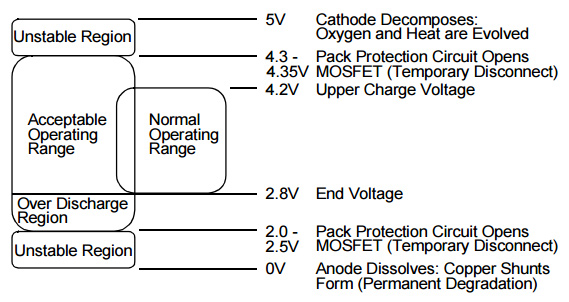Lithium based batteries require extra attention as improper storage can cause units to overheat and potentially catch fire in a process known as thermal runaway. Many types also have both the negative and positive terminals on the same side making it easy to accidentally short out the unit on metal shelving if they are left uncovered.
This article relates to both Lithium batteries (also known as Lithium Metal non rechargeable) and Lithium Ion batteries (rechargeable) that are to be stored for several weeks or longer.



“while tests have suggested that if this battery type is kept fully charged the recoverable capacity is reduced over time.”
I have never been able to find such tests. Consumer products, including electric car batteries, laptops, solar systems never, ever mention this.
The only place I can find this on the web is here and Battery University.
Do you have ANY references to ANY real study which demonstrates this behaviour?
If you Google “lithium battery state of charge for long term storage” you will find a number of sources. You will not find this mentioned on most consumer products because they intend the battery to be in use. This article really is focused on long term storage. I have updated the article to make this clearer.
Does it matter if you store batteries vertically or horizontally?
For lithium batteries it should not matter but always check with the manufacturer
I have a lithium battery in my Motorhome and it is kept undercover in storage.
The battery is discharging whilst in storage at about 10% per day.
The battery is less than 2 years old.
Is this ok?
Or should I have the battery being charged with a liar blanket?
Or does the discharge rate of 10% per day indicate it is a faulty battery?
Yes, sounds like something is not right with the battery. The rate of discharge should be much slower. 1-2% per month
Are there any systems set up for specifically trickle charging 18650 packs or singles over a long period shelf life with solar charging options?
I’ve been trying to research a design to allow for my batteries to sit for a long period of time on a battery tender, to allow for longer shelf life, as needed. But it doesn’t seem like these systems exist or are impossible to find. I have a few 60 watt panels that I want to use to power the tickle charging system, each day there is enough sunlight to trickle 2-3 hours of charge at a minimum. So in theory, if I have a system set up like this for long term, I would house 200-300x 18650’s and have a longer shelf life due to their constant trickle charge each day. Or is this even correct?
Not really. If you are storing lithium batteries for several weeks or longer they need to be kept at around 40-60% State of Charge. A trickle charge may cause over charge or under charge unless there was some kind of monitor built in.
So a 20v tool battery should be discharged to about 15v-16v volts for long term storage?
No, the voltage of a battery stays fairly constant until it is close to complete discharge. It is difficult to reliably measure state of charge from voltage. You will need a specific product to read the state of charge of any particular battery.
I don’t see how to maintain the charge. I’ve got maybe 8 different tools with batteries and chargers. If I let em sit over the winter they’ll discharge and if I leave them plugged in they’ll overcharge. Am I supposed to remember to periodically charge them every month?
If they are lithium-ion batteries you don’t need to worry about self discharge over a short period of a few months. Lithium-ion batteries have very low levels of self discharge.
i have a scooter. with a lithium ion battery 40 volt, how do you determine the storage charge , the charger is a cheap one that only charges to max voltage
You would either need to purchase a battery charger which states the level of charge or a device (usually from the manufacturer of the battery) that could tell you this.